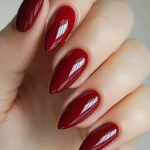
History and Cultural Significance of Tattoos
Tattoos have been a profound and enduring form of self-expression for centuries. From ancient tribal markings to modern-day art pieces.
Through all times and various cultures tattoos have etched themselves into human history to create permanent marks. Tattoos maintain rich symbolic meaning beyond aesthetics because they represent ancestral traditions and religious values besides retaining individual distinctive value. The remarkable expansion of tattoos across cultures and time periods will be examined here alongside their social influences.
The Origins of Tattoos

Throughout multiple thousands of years people have practiced tattooing as a craft. Remote human societies preserved tattoos on both mummified remains and ancient artifacts thereby confirming that tattooing stood as a cornerstone practice of such civilizations. Archaeological findings record Ortiz the Iceman as the oldest mummified human with 61 tattoos discovered in the Alps. The remains date to 5,300 years ago. Foreign experts analyzed 61 tattoos that appeared on his body for therapeutic or ceremonial purposes.
In ancient Egypt, tattoos were primarily associated with women. Female figurines and mummies displayed tattoos thought to symbolize fertility, protection during childbirth, and religious devotion. Similarly, ancient Nubian societies used tattoos to denote social status and cultural identity.
Tattoos in Indigenous Cultures

Alongside many other cultures from around the globe tattooing represents a sacred tradition of significance for indigenous communities. Polynesian societies give tattoos known as “Tatau” special importance because of their distinct cultural meaning. The elaborate tattoo patterns serve as messengers which communicate both family heritage and social position and individual accomplishments. Tattoo making which started using tools such as bone and wood signified both personal achievements and lasting skills as well as initiation into cultural adulthood.
According to Māori beliefs “mojo” or tattooing represents a sacred art practice. The Māori practice of facial tattooing called “mojo Kauai” uses decorative forms that present a person’s family history along with social standing and personal lifetime experiences. Among the Māori community tattoos serve as an active form which expresses individual cultural identity because they convey personal history and ancestral information.
Similarly, Native American tribes used tattoos for spiritual protection and to signify tribal affiliation. Designs often featured animals, celestial symbols, and sacred patterns believed to hold mystical powers.
Tattoos in Ancient Asia

Asian tattooing traditions prosper for centuries primarily within the cultural spheres of China and Japan. People in Japan have practiced “resume” (tattooing) going back to the Jarmon period which began around 10,000 BCE. From their origins tattoos served first as expressions of spirituality and decorative ornamentation. Throughout the Edo period (1603-1868) tattoos earned an association with common workers such as laborers and firefighters as they adopted tattoos as symbols of bravery and solidarity between peers.
In its evolution tattooing in Japan developed high artistic standards which exhibited elaborate tattoo designs featuring dragons and koi fish together with cherry blossom images. Traditional Japanese tattoos currently command universal recognition because their aesthetic value combined with their deep cultural background elements.
In China, tattoos were historically viewed with ambivalence. While some regions used tattoos as symbols of loyalty or punishment, others saw them as a form of rebellion against societal norms. The practice has undergone a renaissance in modern times, with younger generations embracing tattoos as a means of self-expression.
Tattoos in Western History

The practice of tattooing has experienced multifold changes across Western culture. During ancient times Greek and Roman civilizations applied tattoos to enslaved people while also marking the bodies of both prisoners of war and convicted offenders. Warriors across different cultures believed tattoos provided sacred protection during combat but other meanings also attached to body modifications.
By the 18th and 19th centuries, tattoos became popular among sailors and explorers. Maritime tattoos, such as anchors, ships, and swallows, symbolized the wearer’s adventures, achievements, and longing for home. The practice spread to Europe and America, where tattoos began to shed their association with the marginalized and gained acceptance as a form of art.
Tattoos in Modern Culture
During the twentieth and twenty-first centuries people underwent a major change in their views regarding tattoos. What used to be rejected as behavior marking rebellion now stands as an established art form for self-expression. Tattooing technology along with modern tattoo techniques contribute to extraordinary progress in the field by allowing artists to create detailed authentic artworks.
Tattoos have become a global phenomenon, embraced by people from all walks of life. Celebrities, athletes, and influencers have played a pivotal role in normalizing tattoos and making them a mainstream trend. From minimalistic designs to full-body masterpieces, tattoos cater to diverse tastes and preferences.
Cultural Significance of Tattoos
A large number of communities throughout the world use tattoos to mark major occasions including marriage and childbirth and the passage into adulthood. Tattoos symbolize individuals’ personal ideas and connections between family members as well as their ambitions and beliefs.
In addition to their individual significance, tattoos often reflect broader cultural and social trends. For example, the resurgence of tribal tattoos and traditional motifs highlights a growing appreciation for heritage and ancestral roots. Similarly, the popularity of minimalist and abstract tattoos underscores contemporary aesthetics and values.
Tattoos as a Form of Empowerment
Many people use tattoos to boost their power and assist in their healing process. Individuals use body ink to recover lost control of their physical forms while memorializing personal achievements and healing from former painful experiences. Tattoos serve as a strong platform to raise public understanding of diverse societal problems and promote positive activism.
In recent years, tattoos have gained prominence in LGBTQ communities as symbols of pride and solidarity. Designs such as rainbow motifs, equality symbols, and empowering quotes celebrate identity and foster a sense of belonging.
The Future of Tattoos

UV-reactive alongside biodegradable ink developments enable more sustainable tattoo creation options as well as new opportunities in design. The fusion of augmented reality (AR) and virtual reality (VR) technology is changing how we imagine and peruse tattoos.
The growing acceptance and celebration of tattoos across cultures and generations suggest that this ancient art form will remain a vibrant and dynamic part of human expression for years to come.
Through tattoos people show identity through enduring skin art that expresses diverse human responses to resilience and creativity. The history of body art stretches from ancient ceremonial practices into modern artistic creation and these practices now serve as a worldwide language for personal expression. From personal expression to cultural heritage to artistic creation tattoos maintain their diverse historical value along with their wondrous impact on the worldwide audience.









